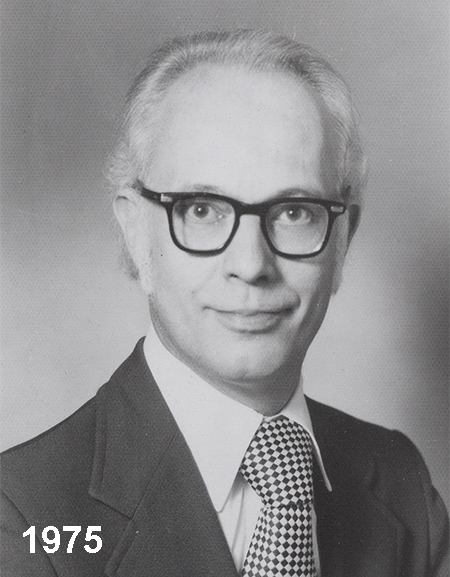In Memoriam: Robert Owen Gorson
1923-2016
by Cari Borrás, DSc


Robert (Bob) Owen Gorson died in Philadelphia, Pennsylvania, his hometown, on 9 May 2016 at the age of 92. He was a World War II Navy veteran, having served in the US Navy as an aviation electronics technician (1944–1946) and then as a lieutenant in the Medical Corps Reserve (1946–1962). From 1949 to 1951 he was the university health physicist at the University of Pennsylvania and then instructor in radiologic physics in the Graduate School of Medicine. In 1959, he moved to Thomas Jefferson University to serve as chief of the Medical Physics Division in Radiology (1959–1989) and as assistant director of the Stein Research Center (1964–1989). He retired as professor emeritus of radiology (medical physics) and professor emeritus of radiation oncology and nuclear medicine, Thomas Jefferson University, in 1989. For 40 years, Bob taught medical students, residents, graduate students, nurses, technologists, and postdoctoral fellows at the University of Pennsylvania and at Thomas Jefferson University.
Bob was certified by the American Board of Radiology (1954), the American Board of Health Physics (1960), and the American Board of Medical Physics (1989), and he served these boards in various capacities. He was an examiner of the American Board of Health Physics from 1963 to 1968 and served as chairman from 1965 to 1966. He became a fellow of the American College of Radiology (ACR) in 1965, of the American Association of Physicists in Medicine (AAPM) in 1989, and of the American College of Medical Physics (ACMP) in 1990. He was elected president of the AAPM in 1969 and received the ACMP and the AAPM Professional Achievement Awards in 1993 and 1997, respectively.
During his career, he served on many committees of the AAPM, ACR, ACMP, Health Physics Society (HPS), International Commission on Radiological Protection (ICRP), National Council on Radiation Protection and Measurements (NCRP), National Research Council, US Public Health Service, Radiological Society of North America, National Cancer Institute, and International Atomic Energy Agency (IAEA). A regular participant of HPS meetings, where he captured many sessions with his video camera, Bob served as chairman of the HPS Committee on Radiation Regulation (1959–1965), as reviewer for the Health Physics Journal, and as the HPS representative (and secretary) to the US National Committee on Medical Physics (1971–1972).
Bob oversaw or contributed to the preparation of seminal publications of NCRP and ICRP: NCRP 33 "Medical X-Ray and Gamma-Ray Protection for Energies Up to 10 MeV—Equipment Design and Use" (1968), NCRP 34 "Medical X-Ray and Gamma-Ray Protection for Energies Up to 10 MeV—Structural Shielding and Evaluation" (1974), NCRP 54 "Medical Radiation Exposure of Pregnant and Potentially-Pregnant Women" (1977), NCRP 174 "Preconception and Prenatal Radiation Exposure: Health Effects and Protective Guidance" (2013), ICRP 33 "Protection of the Patient in Diagnostic Radiology" (1982), and ICRP 44 "Protection of the Patient in Radiation Therapy" (1985). Some of his ideas were enshrined in the 1996 publication "International Basic Safety Standards for Protection Against Ionizing Radiation and for the Safety of Radiation Sources," the international radiation protection standards cosponsored by several international organizations led by the IAEA and adopted or adapted by most countries as their radiation regulations. However, he liked to be remembered for his legacy of over 120 videotaped interviews he conducted of senior medical and health physicists and other radiological scientists.
In addition to photography and videotaping, Bob's personal interests included astronomy and meteorology. He was an avid chaser of total solar eclipses and recorded outstanding images of the sun, the moon, and comets. He is survived by his wife, Joy Peizer Gorson, and his two stepdaughters, Sharon Howe and Lynn W.G. Hanson.



